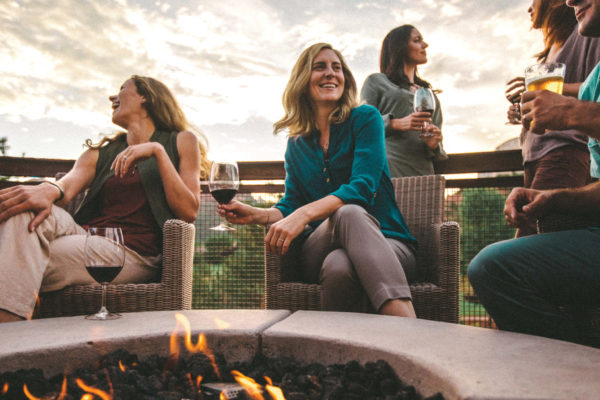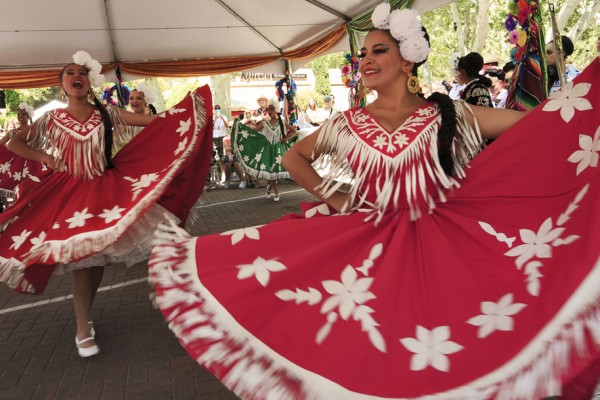Continued (page 2 of 2)
So many of your early films, including Testament, are politicized. It seems like it set the stage for what came in the ’90s and that was your term as the head of the National Endowment for the Arts from 1993 to 1997. How did that appointment come about?
I think you’re on to something because it seemed from very early on I was into films about social issues – racism, divorce, custody battles, nuclear bombs and radiation poisoning. I came alive with films that became successful and were about political or social issues. And then I played Eleanor Roosevelt in a 7-hour miniseries for television. Ever since I played her, which was in ’75 and ’76, people began to look at me as if I had a political life. People actually asked if I would run for local politics. I like to think I have a good head on my shoulders, but I didn’t think I was going to become a politician. By the time Clinton was nominated and they were looking for an NEA chair, my predecessor, John Frohnmayer, had had a very rough time. The Clinton administration was looking for someone to be strong on First Amendment issues, and as an actress, I didn’t have a problem with freedom of expression. The field narrowed from 40 candidates down to me ultimately.
Are you still involved with the agency?
I’m not involved with the agency per say. They have a perfectly wonderful chairwoman right now, Jane Chu, but I am in contact with her. I don’t interject anything – not even my opinion – unless she seeks advice, which, so far, she hasn’t, and I don’t think she’s needed to. I care a lot and work through the strongest NGO, Americans for the Arts. That was an agency that continued to grow after we had so many problems [at the NEA] in the 1990s. We did win the war – we saved the agency – and I’d like to believe there’s such an infrastructure across the country that it will save the agency again.
In many ways, the NEA goes hand in hand with an independent film festival such as ours in Sedona.
That’s right. The Great White Hope began with a $20,000 grant to the playwright. That was one reason I wanted to be involved with the agency. It had made my career possible.
In recent years, you’ve taken more roles on television rather than film. Do you think there are better roles for women on TV rather than the big screen right now?
When you get to my age, and I am in my 70s, there aren’t a lot of roles period. But there are more roles these days on television, even though there are burgeoning independent films – I’m going to be shooting one in a couple of weeks here in New York by a wonderful young director by the name of Noah Buschel. Television, in many respects, has been easier for me. My husband was not in good health for the past five years. I needed to be home. I couldn’t do a play and be away from him for too long. Television was right here in my backyard in New York. I don’t know if you know, but New York is vying with LA for the number of studios. It’s quite a remarkable place to be living if you’re an actor right now. There were a couple of pilots that I’ve done in the past few years that I wish had been picked up. You’re going to laugh your head off when you hear about one of the characters. It was for a show called Brooklyn Animal Control. I played the werewolf matriarch of a huge clan that had lived in Brooklyn for 400 years [laughs]. You should have seen my digital werewolf. She was gorgeous – she was 8 feet tall. I adored her. Most of the time I was human, but every once in a while a werewolf needs some blood. I was crazy about this role. I was like the godmother of Brooklyn, but it didn’t get picked up.
What are you currently working on?
I just ended a run on a beautiful play called Fireflies at a regional theater in New Haven. I adored this play – I played this crusty Texas schoolmarm. A drifter comes into town, and things proceed from there. It’s quite a romance, and it was wonderful. A romantic comedy in your late-70s – why not?
You are a passionate birder, naturalist and conservationist. Will you have the chance to do any birding while you’re in Sedona?
Yes, yes, yes! Probably half the time I’m in Sedona, I’ll be out there. I am on the national board of the Audubon Society, so I’ll probably contact the chapter there. If you live in Arizona and don’t know it’s an incredible place for birding, you should know. It’s exciting that you’re living in a place with so many remarkable creatures. We can all contribute to healing an abused planet for the health of all things that live on it beginning in our own backyards. This is not a difficult task. It brings joy with it. It starts with observing what shares our space with us – plants and animals. It continues with the understanding that we are dependent on each other for the health of us all. It means we protect those things that share our spaces, that we do not poison them. It is not about killing things but making sure they continue the cycles of birth so extinction is not inevitable. We begin locally and we go on to our larger concerns like public lands, which belong to us all. When I speak to groups, the charge I give them is to join a local group that conserves and protects wild things and wild places, and a large state or regional group and then a national or international organization such as Wildlife Conservation Society. You get the gist of what I am saying. I spend half my time on these issues and personally belong to 25 organizations as a member and about six as a board member or advisor.
MORE SEDONA MONTHLY INTERVIEWS: Everett McGill, Bruce Hornsby, Chicago, Cody Horn, The Band Perry, John Waters, Leighton Meester, Ed Asner, Susan Sarandon, Tony Curtis, Joan Collins, Martin Sheen, Emilio Estevez, Lea Thompson, Don Black, Beatrice Welles, Frances Fisher, Gary Sinise, Rita Rudner, Michael Moore, Tim Daly, Maynard James Keenan, Richard Schiff, Connie Stevens, Don Hahn, Ed Harris, Marla Sokoloff, Bill Plympton, Robert Osborne, Jane Seymour, Robert Shields
MOVIE CRAZY? Purchase a copy of Arizona’s Little Hollywood: Sedona and Northern Arizona’s Forgotten Film History 1923-1973



